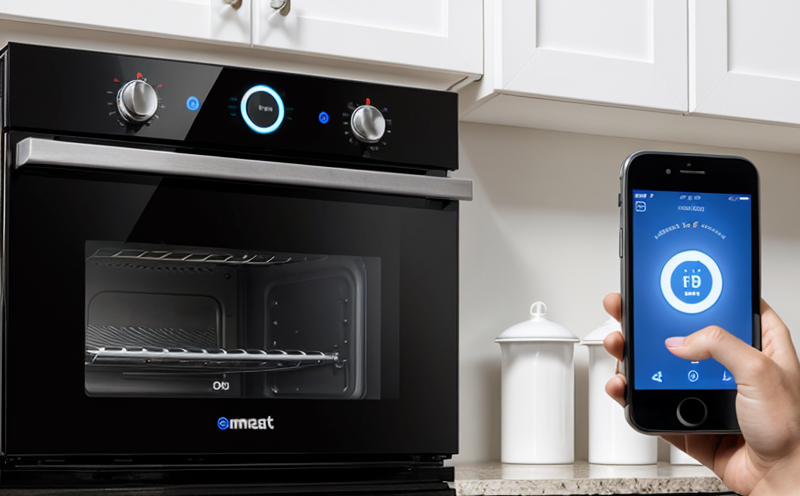IEC 62301 Standby Power Consumption Testing of Smart Appliances
The International Electrotechnical Commission (IEC) standard IEC 62301 provides a framework for the testing and assessment of standby power consumption in electrical and electronic equipment, including smart appliances. This standard is crucial as it helps manufacturers ensure that their products meet energy efficiency regulations and contribute to reducing unnecessary electricity usage during non-operational states.
Standby power refers to the electrical power consumed by devices when they are not performing their primary function but remain connected to a power supply. For smart appliances, this can be particularly significant as many of these devices incorporate additional functionalities that consume energy even in idle or standby modes. By adhering to IEC 62301, manufacturers can reduce the environmental impact of their products and comply with regulatory requirements.
The testing process outlined by IEC 62301 involves several key steps: first, the device is placed in a controlled environment that simulates real-world conditions. This includes ambient temperature, humidity levels, and other relevant factors. Next, the device is powered on to its operating state and then switched to standby mode. The power consumption during this period is measured using calibrated instruments capable of capturing even minute differences.
It’s important to note that IEC 62301 does not just focus on energy efficiency but also considers other aspects such as the impact of standby power on overall electricity bills and greenhouse gas emissions. This makes it a comprehensive standard for evaluating the sustainability of smart appliances.
The compliance process involves rigorous testing protocols designed to ensure accuracy and consistency across different models and batches of products. Laboratories accredited in accordance with ISO/IEC 17025 must perform these tests, ensuring that results are reliable and repeatable. Compliance officers responsible for product development and quality assurance play a critical role in overseeing this process.
For R&D engineers working on new smart appliance designs, understanding IEC 62301 is essential for optimizing power consumption without sacrificing functionality or user experience. By incorporating these principles early in the design phase, companies can develop products that not only meet regulatory standards but also appeal to environmentally conscious consumers.
Moreover, adherence to IEC 62301 aligns smart appliances with broader sustainability initiatives aimed at reducing global energy consumption. As consumer awareness grows about the environmental impact of electricity use, manufacturers who demonstrate commitment to minimizing standby power will likely gain a competitive edge in the market.
In conclusion, implementing IEC 62301 during the design and manufacturing stages ensures that smart appliances are not only efficient but also sustainable. This approach benefits both the environment and business operations by promoting long-term cost savings through reduced energy expenses.
Why It Matters
Understanding the importance of IEC 62301 is crucial for any organization involved in the development, production, or regulation of smart appliances. Here are some key reasons why compliance with this standard matters:
- Regulatory Compliance: Many countries have laws mandating that products meet certain energy efficiency standards, including those outlined by IEC 62301.
- Sustainability: Reducing standby power consumption contributes to lower carbon footprints and helps mitigate climate change.
- Consumer Satisfaction: Consumers increasingly value eco-friendly products, making it essential for manufacturers to demonstrate their commitment to sustainability.
- Competitive Advantage: Companies that prioritize energy efficiency may find themselves ahead of competitors who neglect this aspect.
In addition, compliance with IEC 62301 can lead to improved brand reputation and increased market share. By showcasing a strong commitment to sustainability, companies can attract environmentally conscious customers and build trust within the industry.
Furthermore, adhering to these standards encourages innovation in product design, leading to more efficient appliances that perform well even under minimal power usage conditions.
Competitive Advantage and Market Impact
- Eco-Friendly Image: Compliance with IEC 62301 enhances a company’s reputation as an environmentally responsible entity, which can be a significant draw for consumers.
- Regulatory Assurance: Meeting these standards ensures that products will meet regulatory requirements and avoid potential legal issues.
- Consumer Preference: Consumers are increasingly prioritizing energy efficiency when making purchasing decisions, so being compliant with IEC 62301 can influence buying behavior positively.
- Better Brand Loyalty: By demonstrating a commitment to reducing standby power consumption, brands may see higher customer loyalty and repeat business.
The market impact of complying with IEC 62301 goes beyond individual companies; it contributes to broader sustainability goals. As more manufacturers adopt these practices, the overall energy efficiency of appliances improves, leading to significant reductions in global electricity consumption.
Additionally, compliance can open up new markets and opportunities for growth by appealing to a wider customer base that values sustainable products.
Use Cases and Application Examples
The application of IEC 62301 spans various smart appliances and consumer electronics. Here are some specific use cases:
- Air Conditioners: Ensuring that air conditioners consume minimal power when in standby mode can significantly reduce energy costs for users.
- Digital Cameras: While not typically thought of as high-energy consumers, digital cameras still draw some power even when idle. Testing according to IEC 62301 helps minimize this usage.
- Baby Monitors: Smart baby monitors often have features that require continuous monitoring, making it important to test their standby power consumption for efficiency.
- Microwaves: Modern microwaves with built-in displays or digital controls can consume more energy in standby mode than expected. Testing ensures they meet the standard.
In each of these cases, testing according to IEC 62301 involves placing the device in a controlled environment that simulates real-world conditions before measuring its power consumption during standby mode. The results provide valuable insights into how efficiently the product operates and where improvements might be made.
By focusing on reducing standby power consumption, manufacturers can enhance user experience by extending battery life for portable devices or improving overall device performance.





